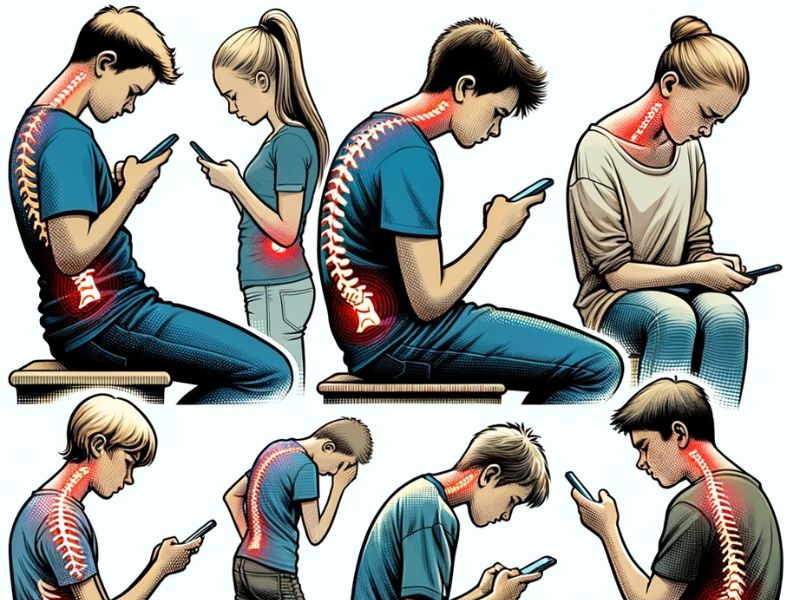
Curved screen, straight back: smartphones and the back
A study reveals the link between excessive smartphone use and back pain in adolescents
Researchers’ alarm: Excessive smartphone use and back pain
Recent research has shown that teenagers who use smartphones for more than three hours a day are more prone to experiencing spinal problems, particularly thoracic spine pain (TSP). This condition occurs in the back of the chest, extending from the base of the neck to the beginning of the lumbar spine. The study, conducted by Brazilian researchers and published in the Healthcare journal, analyzed data from students aged 14 to 18. It was observed that young people are spending increasing amounts of time staring at screens with poor posture, thus causing back pain and other related issues.
Risk factors and prevalence of the problem
Researchers have identified various risk factors related to spinal health, including the duration of screen viewing, the proximity of the eyes to the screen, and the sitting or lying position on the stomach while using a smartphone. The prevalence of TSP varies globally, ranging from 13% to 35% among children and adolescents. During the COVID-19 pandemic, the increased use of electronic devices has clearly exacerbated the problem. The collected data revealed an annual prevalence of 38.4% and an annual incidence of 10.1% for TSP, with higher reporting among girls compared to boys.
Long-term consequences and educational implications
Children and adolescents suffering from back pain tend to be less active, achieve lower academic results, and have more psychosocial problems. National educational objectives in various countries emphasize the importance of health education in schools, including the identification of individual and collective health risks and the promotion of self-care habits related to the body’s limits and capabilities.
The need for greater awareness and targeted interventions
The growing evidence of the link between excessive smartphone use and back pain in young people underscores the need for greater awareness of this issue. It is essential to develop targeted interventions in schools and communities to promote correct postures during device use and encourage more active lifestyles among adolescents.


